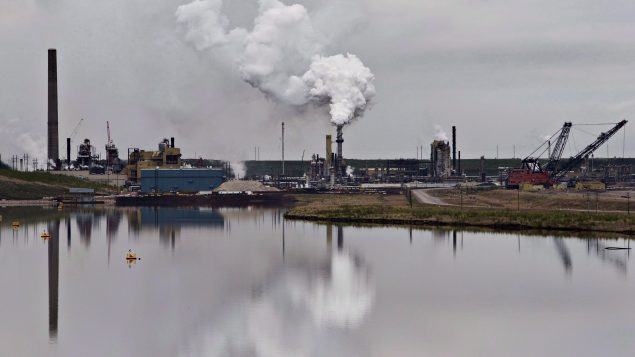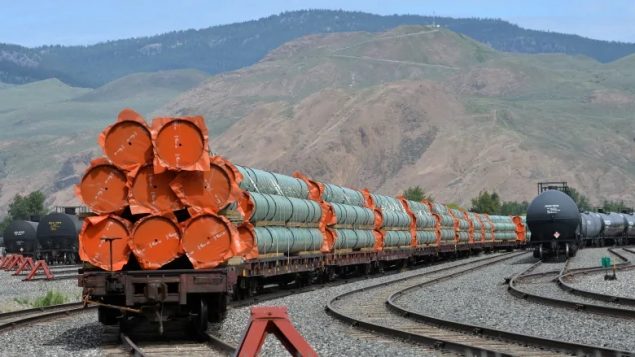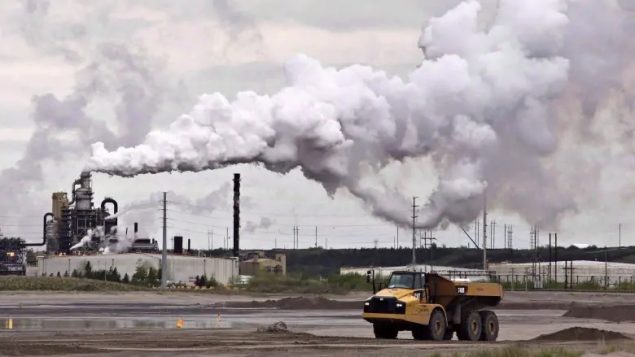Rapid technological advances in the exploration and production of Alberta’s oil sands have propelled Canada to become the world’s fourth largest producer of crude oil in 2018, behind the U.S., Russia and Saudi Arabia, according to a new report.
In its latest report entitled ‘Oil Sands,’ the UK-based data and analytics company GlobalData says that thanks to favourable government policy initiatives, oil sands production accounted for nearly two-thirds of Canada’s total crude oil production in 2018.
“With further improvements in technology and extraction processes, the oil sands industry could prove to be a major growth driver for the Canadian economy, similar to the recent shale boom in the U.S.,” said in a statement Ravindra Puranik, oil & gas analyst at GlobalData.
Oil sands projects face environmental concerns

A Syncrude oil sands facility and its tailings pond near Fort McMurray in western Canada, June 1, 2014. Canadian environmental groups are criticizing the government for allowing the oil and gas industry to weaken efforts to curb climate change. (Jason Franson/THE CANADIAN PRESS)
While vital for Canada’s economy, Alberta’s development of oil sands, also known as tar sands because of their high concentration of bitumen, has faced severe criticism by Canadian and international environmental groups because of its huge environmental footprint and greenhouse gas emissions.
The process of mining and extraction of bitumen from the oil sands requires giant open pit mines and consumes large amounts of energy and water. Oil sands mining operations also produce a toxic brew of water, sand, silt and petrochemical waste products, which are stored in enormous open-air reservoirs called tailings ponds.
- Stop expanding oilsand tailings ponds, urge environmental groups
- Financial institution backing out of new tar sands, fossil fuel projects
According to the estimates of environmental non-governmental group Environmental Defence, over the last five decades Alberta’s oil sands industry has pumped over one trillion litres of waste water into these tailings ponds.
This heavy environmental footprint and the negative image associated with oil sands production has prompted several oil and gas and financial institutions to pull out of oil sands projects.
Lack of pipelines limits growth

Steel pipes to be used in the oil pipeline construction of Kinder Morgan’s Trans Mountain expansion project sit on rail cars at a stockpile site in Kamloops, B.C. (Dennis Owen/Reuters)
The oil sands industry also faces enormous logistical challenges in getting its product to the markets due to insufficient pipeline capacity and setbacks in construction of new pipelines or expansion of existing ones.
“The growth in oil production in Canada is encountering the problem of chronic midstream infrastructure bottlenecks, amid delays in construction of new pipelines,” Puranik said.
“The two major pipelines that were expected to ease the bottlenecks–Keystone XL and Trans Mountain–have been delayed indefinitely due to legal and regulatory setbacks.”
However, despite these setbacks, as the global demand for crude oil is expected to grow, particularly in Asia, the Canadian oil sands industry will continue to attract investments from all over the world, Puranik said.
“Nevertheless, considering the overall complexity of the oil sands extraction process, global prices for crude oil will have to remain at comparatively higher levels to ensure profitability from oil sands projects,” he added.







For reasons beyond our control, and for an undetermined period of time, our comment section is now closed. However, our social networks remain open to your contributions.